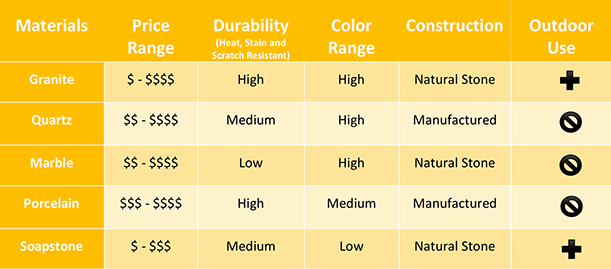Innovative Granite Patterns and Textures for a Modern Kitchen
The kitchen is the heart of the home, and choosing the right materials can transform it into a space that seamlessly blends functionality with aesthetics. Granite, with its timeless elegance and durability, has become a staple in modern kitchen design. In this blog post, we’ll explore the world of innovative granite patterns and textures that can elevate the style of your kitchen, turning it into a contemporary culinary haven.
Beyond the Basics: Exploring Unique Granite Patterns
Granite is celebrated for its natural patterns and variations. Dive into the world of unique granite patterns beyond the classic speckled or veined designs. From dramatic swirls to geometric patterns, discover how innovative granite patterns can add a touch of artistry to your kitchen.
Textured Surfaces: Adding Depth and Interest
While smooth polished granite remains a popular choice, textured surfaces are making a comeback in modern kitchens. Explore leathered, honed, or flamed finishes that introduce a tactile dimension to your countertops. These textures not only enhance the visual appeal but also create a more dynamic and inviting kitchen environment.
Waterfall Edges: Contemporary Elegance in Granite Countertops
The waterfall edge is a design trend that involves extending the granite countertop material vertically down the sides of an island or cabinet, creating a continuous flow. Learn how this modern design technique can transform your kitchen, adding a sleek and contemporary touch to the heart of your home.
Mismatched Granite: Embracing Eclectic Style
Mixing and matching granite patterns and colors might sound unconventional, but it’s a growing trend in modern kitchens. Explore the possibilities of using different granite varieties for kitchen islands, countertops, and backsplashes, creating an eclectic and visually captivating space.
Large Format Granite Slabs: Minimalist Sophistication
Modern design often embraces simplicity, and large format granite slabs align perfectly with this aesthetic. Discover how using larger, uninterrupted granite surfaces can contribute to a minimalist and sophisticated kitchen design, reducing seams and enhancing the sense of continuity.
Backlit Granite: Illuminating Your Kitchen
Incorporate cutting-edge technology into your kitchen design by exploring backlit granite. Learn how LED lighting can be strategically placed to illuminate translucent or lighter granite, creating a breathtaking visual effect that adds a touch of modernity and ambiance to your kitchen.
As the focal point of your home, the kitchen deserves a design that reflects your style and embraces contemporary trends. Innovative granite patterns and textures offer a plethora of possibilities, allowing you to create a kitchen that is not only functional but also a visual masterpiece. Whether you prefer the bold statement of unique patterns, the tactile allure of textured surfaces, or the sleek elegance of large format slabs, the world of granite is evolving to meet the demands of modern kitchen design. Embrace these innovations and transform your kitchen into a space that seamlessly merges the beauty of natural stone with the demands of modern living.


